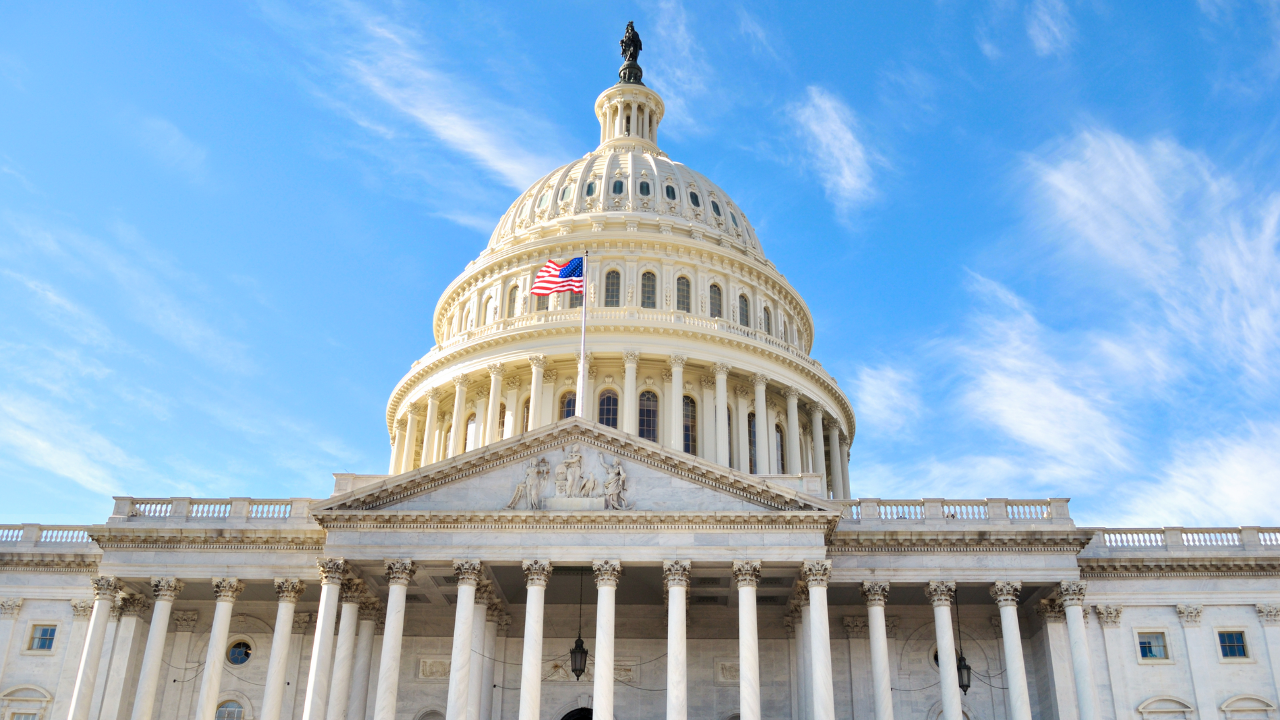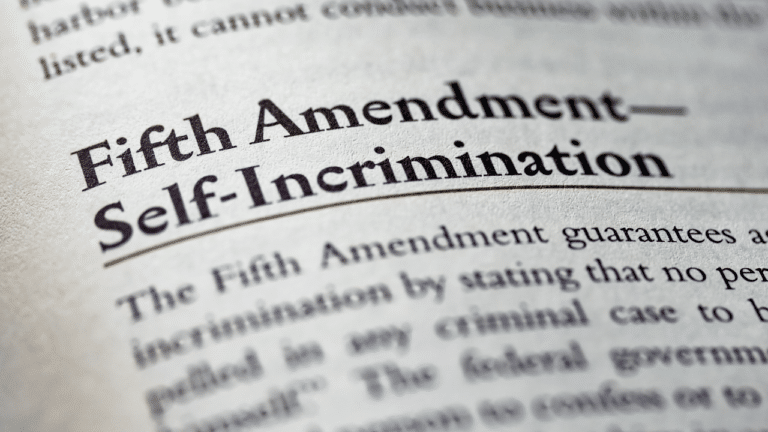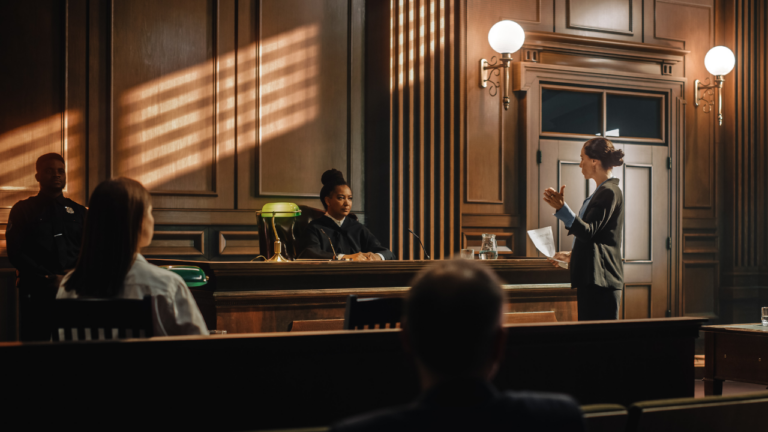
The Tenth Amendment to the Constitution of the United States protects the legislative and administrative power of the States from interference by the federal government.
What is the Tenth Amendment in simple terms?
The Tenth Amendment makes clear that the powers not delegated to the federal government by the Constitution are reserved to the States and the people. This means that Congress has limited authority to regulate state activities, a power that properly sits with the state governments.
WHAT IS THE TEXT OF THE TENTH AMENDMENT TO THE UNITED STATES CONSTITUTION?
U.S. Const. Amend. X. RESERVED POWERS TO STATES.
The powers not delegated to the United States by the Constitution, nor prohibited by it to the States, are reserved to the States respectively, or to the people.
WHAT IS THE BACKGROUND AND CONTEXT OF THE TENTH AMENDMENT IN THE BILL OF RIGHTS?
The Framers of the U.S. Constitution, including John Adams, Thomas Jefferson, and James Madison, recognized the importance of protecting individual liberties from government intrusion. Their intention, made clear by the Preamble, was to “form a more perfect Union, establish Justice, insure domestic Tranquility, provide for the common defense, and promote the general Welfare.”
To assuage the Democratic-Republicans and Anti-Federalists, framer James Madison drafted the first ten constitutional amendments, known as the Bill of Rights, based on the desire to avoid another tyrannical government they had fought so hard against. The Federalist party secured the ratification of the U.S. Constitution by promising the addition of amendments codifying fundamental liberties outlined in the Bill of Rights.
The Bill of Rights guarantees fundamental freedoms often restrained by despotic, oppressive governments. It encompasses “the great rights” such as the first amendment freedom of speech and the press, the fourth amendment right to be free from unreasonable government searches and seizures, the eighth amendment prohibition against cruel and unusual punishment, and the second amendment right to keep and bear arms.
The first eight amendments are considered the “choicest privileges of the people” in the United States, and are protected from government overreach. Many of these rights were incorporated through the Fourteenth Amendment Due Process Clause to apply to state governments as well as the federal government. The spirit of most amendments, including the 10th amendment, was captured prior to the Bill of Rights in the Articles of Confederation of 1777.
The first ten amendments were proposed to several state legislatures by the First Congress on September 25, 1789. New Jersey was the first State to ratify the Bill of Rights on November 20, 1789, followed by Maryland, North Carolina, South Carolina, New Hampshire, Delaware, Pennsylvania, New York, and Rhode Island in 1790. Vermont and Virginia ratified the Bill of Rights in 1791, resulting in its adoption. The Legislatures of Connecticut, Georgia, and Massachusetts held out on ratification until 1939.
What is federalism?
Federalism, “our Nation’s own discovery”, is the principle or system of government rooted in the division of power between the state and federal governments. It is thought to prioritize the freedom of the people from a tyrannical, single federal government, with a heavy focus on individual rights.
As Justice Kennedy puts it, “[t]he Framers split the atom of sovereignty. It was the genius of their idea that our citizens would have two political capacities, one state and one federal, each protected from the uncursion of the other.” U.S. Term Limits, Inc. v. Thornton, 514 U.S. 779 (1995) (Kennedy, J., concurring).
Federalism, as reflected in the constitutional allocation of powers between the National Government and the States, preserves the integrity, dignity, and residual sovereignty of the States, and the federal balance is an end itself to ensure the States function as political entities in their own right. Bond v. U.S., 564 U.S. 211 (2011). Federalism secures to citizens the liberties that derive from the diffusion of sovereign power.
The federalist structure of joint sovereigns preserves numerous advantages to the people in that it: (1) assures a decentralized government that will be more sensitive to the diverse needs of a heterogeneous society; (2) increases opportunity for citizen involvement in democratic processes; (3) allows for more innovation and experimentation in government; and (4) it makes government more responsive by putting to the States in competition for a mobile citizenry. Gregory v. Ashcroft, 501 U.S. 452 (1991).
Perhaps the principal benefit of the federalist system is a check on abuses of government power. The constitutionally mandated balance of power between the States and the Federal Government was adopted by the Framers to ensure the protection of our fundamental liberties. Just as the separation and independence of the coordinate branches of the Federal Government serve to prevent the accumulation of excessive power in any one branch, a healthy balance of power between the States and the Federal Government will reduce the risk of tyranny and abuse from either front. Gregory v. Ashcroft, 501 U.S. 452 (1991).
Alexander Hamilton explained to the people of New York, perhaps optimistically, that the new federalist system would suppress completely “the attempts of the government to establish a tyranny”:
“[I]n a confederacy the people, without exaggeration, may be said to be entirely the masters of their own fate. Power being almost always the rival of power, the general government will at all times stand ready to check the usurpations of the state governments, and these will have the same disposition towards the general government. The people, by throwing themselves into either scale, will infallibly make it preponderate. If their rights are invaded by either, they can make use of the other as the instrument of redress.” The Federalist No. 28, pp. 180–181 (C. Rossiter ed. 1961).
James Madison made much the same point:
“In a single republic, all the power surrendered by the people is submitted to the administration of a single government; and the usurpations are guarded against by a division of the government into distinct and separate departments. In the compound republic of America, the power surrendered by the people is first divided between two distinct governments, and then the portion allotted to each subdivided among distinct and separate departments. Hence a double security arises to the rights of the people. The different governments will control each other, at the same time that each will be controlled by itself.” Id., No. 51, p. 323.
One can fairly dispute whether our federalist system has been quite as successful in checking government abuse as Hamilton promised, but there is no doubt about the design. If this “double security” is to be effective, there must be a proper balance between the States and the Federal Government. These twin powers will act as mutual restraints only if both are credible. In the tension between federal and state power lies the promise of liberty. Gregory v. Ashcroft, 501 U.S. 452 (1991).
The Federal Government holds a decided advantage in this delicate balance: the Supremacy Clause. U.S. Const., Art. VI, cl. 2. As long as it is acting within the powers granted it under the Constitution, Congress may impose its will on the States. Congress may legislate in areas traditionally regulated by the States. This is an extraordinary power in a federalist system. It is a power that we must assume Congress does not exercise lightly. Gregory v. Ashcroft, 501 U.S. 452 (1991).
WHAT IS THE HISTORICAL ORIGIN OF THE TENTH AMENDMENT IN THE BILL OF RIGHTS?
The Founding Fathers believed two governments could not co-exist without one government slowly subsuming the other over time. The Constitution was written with this process in mind, referred to as imperium in imperio, and played a central, fear-driven role. The topical division of power between the federal and state governments and the Tenth Amendment’s reservation of rights to the states “or the people” is just one example. The Founders knew they needed to prevent the concentration of power in either the states or the federal government; one government being larger than the other would threaten the freedom of the people. See Michael D.O. Rusco, Oklahoma v. Castro-Huerta, Jurisdictional Overlap, Competitive Sovereign Erosion, and the Fundamental Freedom of Native Nations, 106 Marq. L. Rev. 889 (2023).
The Framers were heavily influenced by the great thinker John Locke, an English philosopher and physician. See Gundy v. U.S., 139 S.Ct. 2116 (2019) (Gorsuch, J., dissenting). Locke famously wrote that men are “all free, equal, and independent,” and “no one can be . . . subjected to the political power of another without his own consent.” John Locke, Second Treatise of Government 8 (1690). Locke also philosophized that those who “unite into a community, must be understood to give up all the power, necessary to the ends for which they unite into society.” Id. In other words, the people forfeit only those rights necessary for effective self-government, not all rights.
Taking Locke’s liberalism into consideration, the Anti-Federalists, led by Patrick Henry, argued the Constitution failed to protect the unalienable rights and freedoms from the government. In response, the Federalists insisted the Ninth Amendment refers to rights that the government may not infringe upon. Fundamental rights not explicitly mentioned in the Constitution are therefore protected by the Ninth Amendment, while the Tenth prohibits intrusion into state regulatory power by Congress.
The Amendment is almost entirely the work of James Madison. It was introduced in Congress by him and passed in the House of Representatives and Senate with the only criticism being that the amendment was superfluous or unnecessary. Because it is impossible to confine a Government to the exercise of express powers without a Constitution that delves into every minutia, the Tenth Amendment provides for powers and regulations that must necessarily be admitted by implication. The majority of legislative and administrative local power is nevertheless reserved to the states.
According to James Madison, the Bill of Rights specifies two types of rights: those rights that are relinquished to the Legislature, such as trial by jury, and the natural rights retained by the people who have principal ownership over them.
What is a natural right in the U.S. Constitution?
John Locke considered life, liberty, and property to be the natural rights of men, not to be taken away by those who govern. See John Locke, Second Treatise of Government 2 (1960). This recognition of innate human rights existed in common law, as it does today. Justice McLean wrote of natural laws: “[t]his is a field which judges cannot explore.” 17 F.Cas. 335, 339 (C.C.D. Ohio 1853).
Former Circuit Judge Michael McConnell of the U.S. Court of Appeals for the Tenth Circuit echoed Judge McLean’s sentiment, and the Lockean social compact. Michael W. McConnell, The Ninth Amendment in Light of Text and History. Essentially, following John Locke’s legal and philosophical social theories, natural rights and laws are not for the courts to decide: “The essence of the Lockean social compact is that we relinquish certain of our natural rights and we receive, in return, more effectual protection for certain of our rights, plus the enjoyment of positive rights . . . created by the action of political society.” Id.; See also Seth Rokosky, Denied and Disparaged: Applying the “Federalist” Ninth Amendment, 159 U. Pa. L. Rev. 275 (2010).
WHAT DOES THE TENTH AMENDMENT DO?
The Tenth Amendment is another attempt to construe and define the relationship between Congress and state legislatures. It limits Congress’s authority to regulate state activities.
Every law enacted by Congress must be based on one or more of its powers enumerated in the Constitution. U.S. v. Morrison, 529 U.S. 598 (2000). The powers of the legislature are defined and limited; and that those limits may not be mistake, or forgotten, the constitution is written. Marbury v. Madison, 5 U.S. (1 Cranch) 137 (1803).
If there is a plain showing that Congress has exceeded its constitutional bounds, courts invalidate the congressional enactment. But as for the relationship between the national and state governments, there is no general doctrine implied in the Federal Constitution that the two governments are each to exercise its powers so as not to interfere with the free and full exercise of the powers of the other. The Federal Government, when acting within a delegated power, may override countervailing state interests, whether these be described as “governmental” or “proprietary” in character. U.S. v. Morrison, 529 U.S. 598 (2000) (Souter, J., dissenting).
In United States v. Morrison, Justice Souter dissented:
The effort to carve out inviolable state spheres within the spectrum of activities substantially affecting “traditional governmental functions” is incoherent. It is likewise a rejection of the Founders’ considered judgment that politics, not judicial review, should mediate between state and national interests as the strength and legislative jurisdiction of the National Government inevitably increased through the expected growth of the national economy . . . .
Although Madison had emphasized the conception of a National Government of discrete powers (a conception that a number of the ratifying conventions thought was too indeterminate to protect civil liberties), Madison himself must have sensed the potential scope of some of the powers granted, for he took care to hedge his argument for limited power by explaining the importance of national politics in protecting the States’ interests . . . .
The Framers of the Bill of Rights, in turn, may well have sensed that Madison and Wilson were right about politics as the determinant of the federal balance within the broad limits of a power like commerce, for they formulated the Tenth Amendment without any provision comparable to the specific guarantees proposed for individual liberties.
WHAT ARE EXAMPLES OF TENTH AMENDMENT RIGHTS?
The Tenth Amendment does not carve out specific rights. Rather, it protects the states’ autonomy from intrusion by the federal government. For example, the United States allows each of its individual states to exercise discretion in handling firearm sales, restrictions, and possession. Gun laws and the Second Amendment are hotly contested, but the power to impose certain regulations remains with the states.
Ultimately, unless expressly permitted, there can be no federal regulation of purely local matters reserved to the states or the people by the Tenth Amendment.
Does the Tenth Amendment affect Native American Tribes?
The Tenth Amendment never mentions “Indians” or “tribes,” nor whether power over Indians resides with the state or federal government. The Tenth Amendment focuses exclusively on the categorical division of authority between the federal and state governments, and “the people,” leaving to the states only powers not expressly granted to the federal government, or reserved to “the people.”
The reference to “Indian Tribes” in the Commerce Clause, alongside the Treaty Power and War Power, has been interpreted as granting authority to govern relations with Native nations exclusively to the federal government, and denying it to the states.
In Haaland v. Brackeen, the U.S. Supreme Court assessed the validity of the federal Indian Child Welfare Act (ICWA), which required placing a child who is the subject of involuntary termination proceedings with an Indian caretaker, if one is available. Per the law, the child’s tribe has the right to intervene in the custody proceedings. A birth mother filed suit against the United States and other federal parties, arguing the law violates the anti-commandeering principle of the Tenth Amendment. Ultimately, some provisions of the ICWA violated the Tenth Amendment.
WHAT IS THE DIFFERENCE BETWEEN THE 9TH AND 10TH AMENDMENTS?
Although the Ninth and Tenth Amendments have been used as a single principle of federalism, the Ninth Amendment is a rule of construction, while the Tenth is a clearer limit on federal power and preservation of state autonomy.
The Ninth and Tenth Amendments are consistently cited alongside each other, and the Supreme Court has conflated the two, often criticized for its misconstruction. For example, in the period from Reconstruction to the New Deal, courts and commentators used the Ninth and Tenth Amendments as twin guardians of state autonomy. Kurt T. Lash, The Lost Jurisprudence of the Ninth Amendment, 83 Tex. L. Rev. 597 (2005).
Some scholars argue that the Ninth and Tenth Amendments, for all intents and purposes, were meant only as a reminder that the federal government was a government of limited powers confined to operate no further than the powers specifically assigned to it by the Constitution. See Vincent J. Samar, Limiting Fundamental Rights to Only Those Founded Upon Longstanding History and Tradition Undermines the Court’s Legitimacy and Disavows Individual Human Dignity, 22 Conn. Pub. Int. L.J. 1 (2023).
TENTH AMENDMENT TO THE UNITED STATES CONSTITUTION
The Tenth Amendment only shields the States from generally applicable regulations to the extent that the federal government commandeers state legislative and administrative process. In other words, the Tenth Amendment limitations on Congress and the federal government are structural, not substantive, so the States must find their protection from congressional regulation through the national political process, not through judicially defined spheres of unregulable state activity.
TENTH AMENDMENT COURT CASES
The United States Supreme Court has interpreted and applied the Tenth Amendment since its adoption in 1791.
In South Carolina v. Baker, South Carolina argued Congress’s Tax Equity and Fiscal Responsibility Act of 1982 (TEFRA) violated the 10th Amendment because it required state bonds and bonds issued by the U.S. and private corporations to be issued in registered form to receive a tax exemption. The aim was to reduce tax evasion on unregistered bearer bonds. The Supreme Court held the Tenth Amendment was not implicated in this case because South Carolina was neither deprived of any right to participate in the national political process, nor singled out in a way that left it politically isolated and powerless.
In Bond v. United States, the defendant was indicted by a federal grand jury for violating 18 U.S.C. § 229, which prohibits using a chemical weapon, after she caused the victim burns by putting the chemical on the victim’s door knob and mailbox. She argued the law violated the Tenth Amendment because the charges should be left to local authorities to prosecute, rather than being prosecuted under a congressional regulation that expanded into state-regulated domain. The Supreme Court agreed the defendant could challenge her federal prosecution under the Tenth Amendment, and after remand and again granting certiori, 572 U.S. 844, decided this was a local, not federal, matter.














